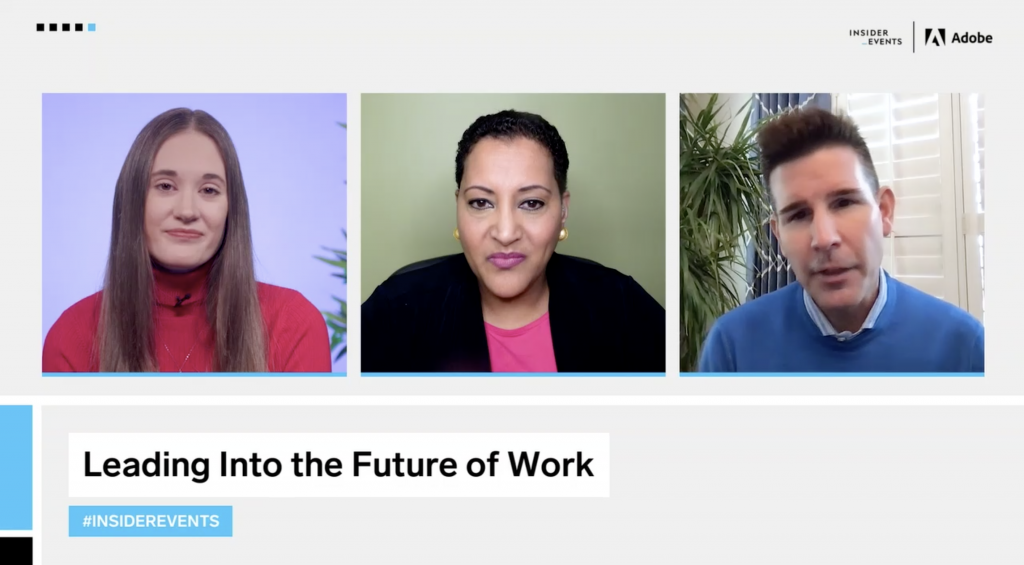
- Remote work for companies of all sizes requires connection, empathy, and innovation.
- Experts advised company leaders to earn trust and increase flexibility.
- That was part of Insider's "Leading Into The Future of Work" event, presented by Adobe, on Jan. 20, 2022.
As we've entered another year of the pandemic, there's no question whether remote work is here to stay. The important part now is how to offer a competitive edge in your company that adapts to your remote employees' needs and improves productivity.
At a session titled "Enabling Productivity and The Future of Remote Work" during the "Leading Into The Future of Work" webinar presented by Adobe on January 20, panelists said that leaders must earn trust and increase flexibility.
"Trust is so important for work and for performance because it's really the glue that binds teams together," said Tsedal Neeley, a business administration professor at Harvard Business School, during the event. Her book "Remote Work Revolution" is based on her decades of research about the digital workplace and includes examples of companies that embraced remote work long before the pandemic.
Neeley outlined two types of trust that leaders must establish — cognitive trust, which is the understanding that one's team members are reliable and competent, and emotional trust, or the understanding that others care about you.
Companies can build these areas of trust by spending time with their employees, whether through team-building events or quarterly in-person meetings. This is often easier for smaller companies, Neeley added. "With larger companies, you have to make sure that the connection, bonding, and values are shared through culture and through strong leadership," she said.
These sentiments must be expressed even through screens and instant messages.
"Remote doesn't mean disconnected," said Todd Gerber, Adobe's vice president of Document Cloud product marketing, which is the company's storage service. "I almost think of remote and hybrid work as the most connected work that you can experience."
In his experience, flexibility and employee well-being are key to remote work. This can start with small, simple steps, he added. At Adobe, teams begin meetings five to ten minutes after the hour to allocate short breaks in between. The company also has collective wellness days during which everyone takes the same time off to fully unplug and recharge.
"Helping to foster that positive environment really helps to reduce the potential for burnout," he said.
Setting boundaries and clearly communicating expectations will also help reduce exhaustion, Neeley added. For example, leaders shouldn't tell their employees they care about their well-being then send emails after work hours. "We have to make sure that we model the right behaviors," she said.
When it comes to productivity, remote work has rendered many analog methods of onboarding and communication obsolete. "On average, a typical worker spends a third of their workweek on mundane, repetitive tasks," Gerber said, citing an August 2021 Adobe study that found 49% of enterprise workers and 56% of small business leaders said they work longer hours than they would like.
Companies that want to invest in their employees need better technology to enable efficient workflows. "The pandemic spurred the need to move processes that were sometimes hybrid to go 100% digital," Gerber said.
Leveraging these best practices and technology will remove friction, he added, which means employees can focus their time and energy on what matters most.
